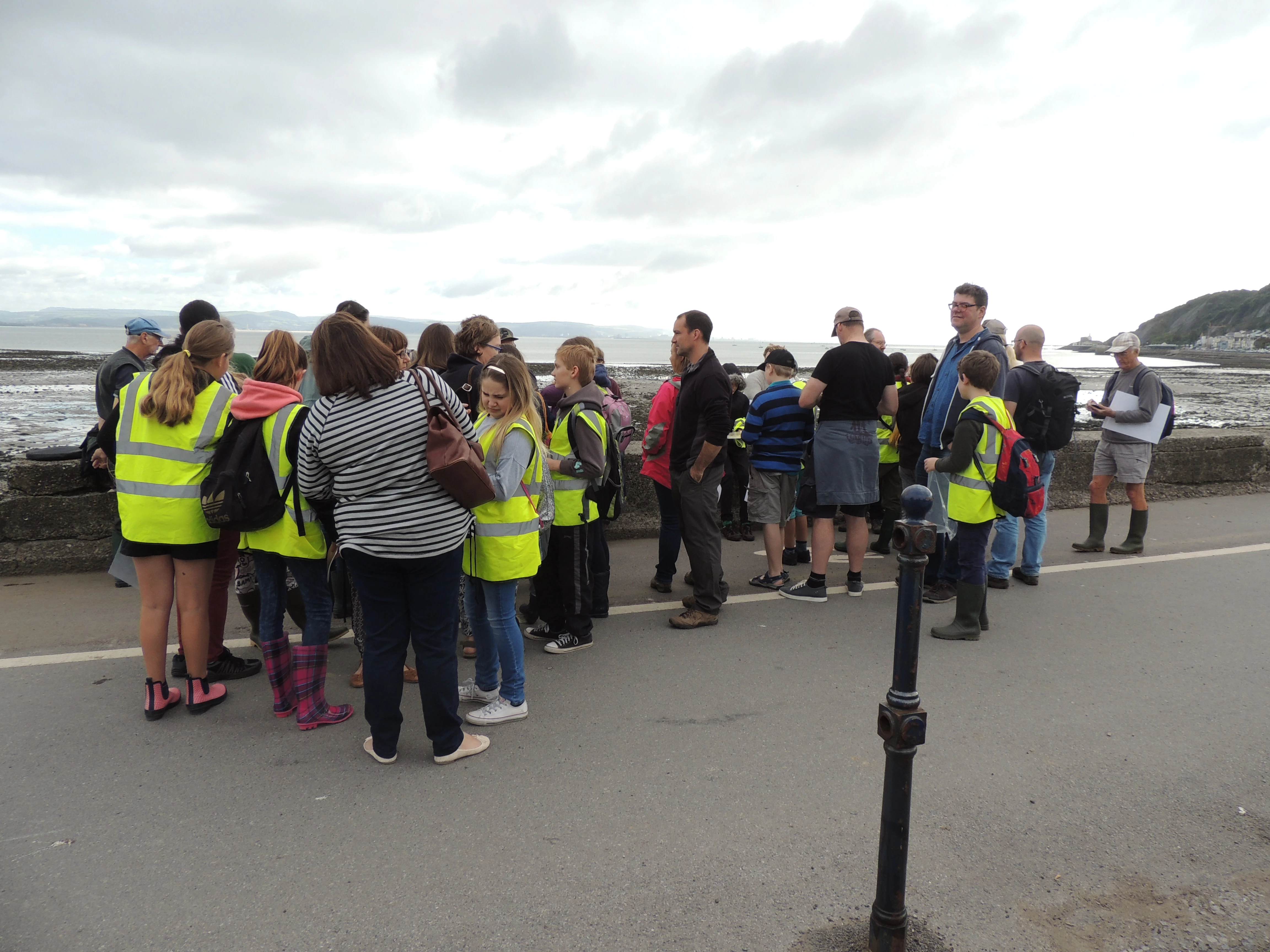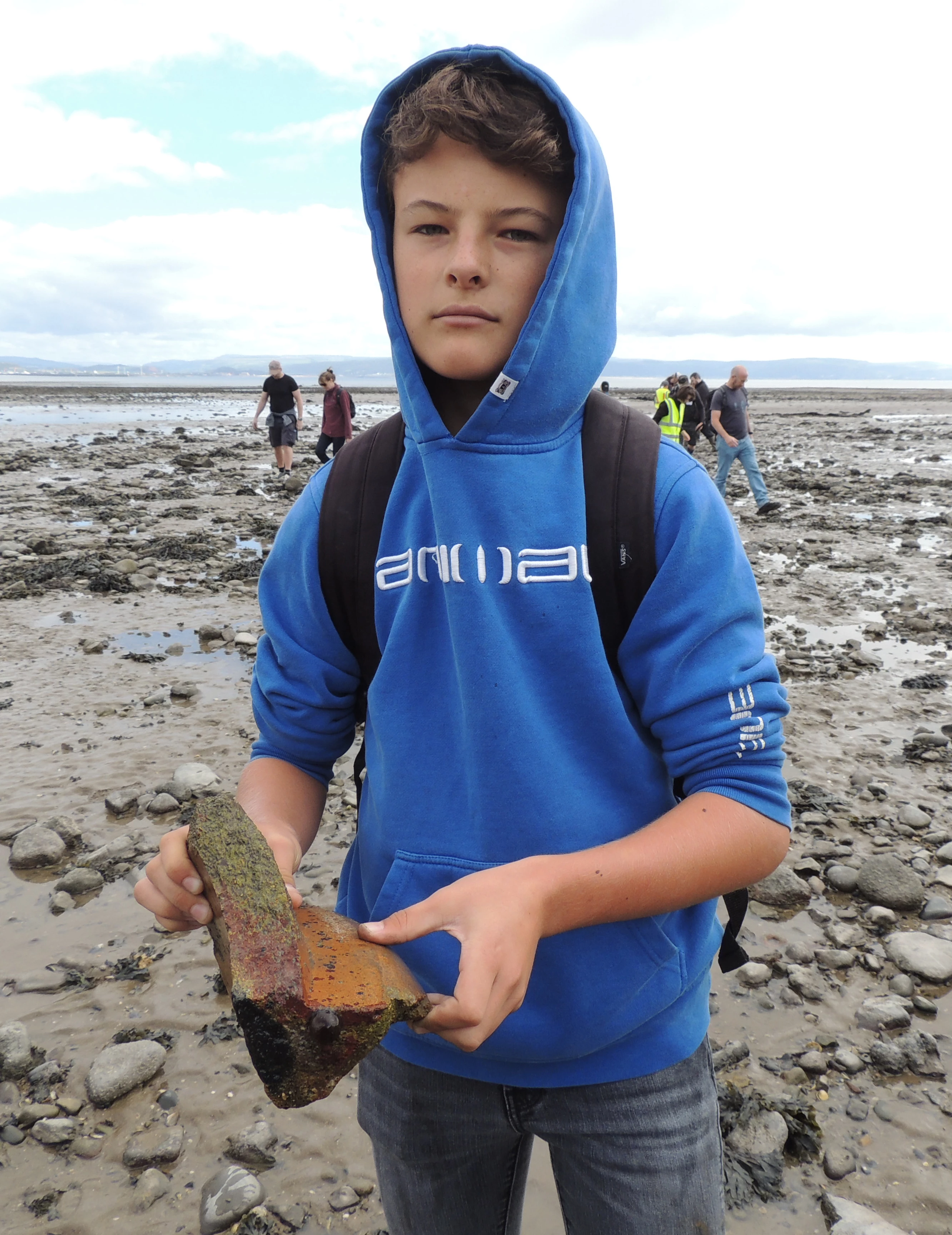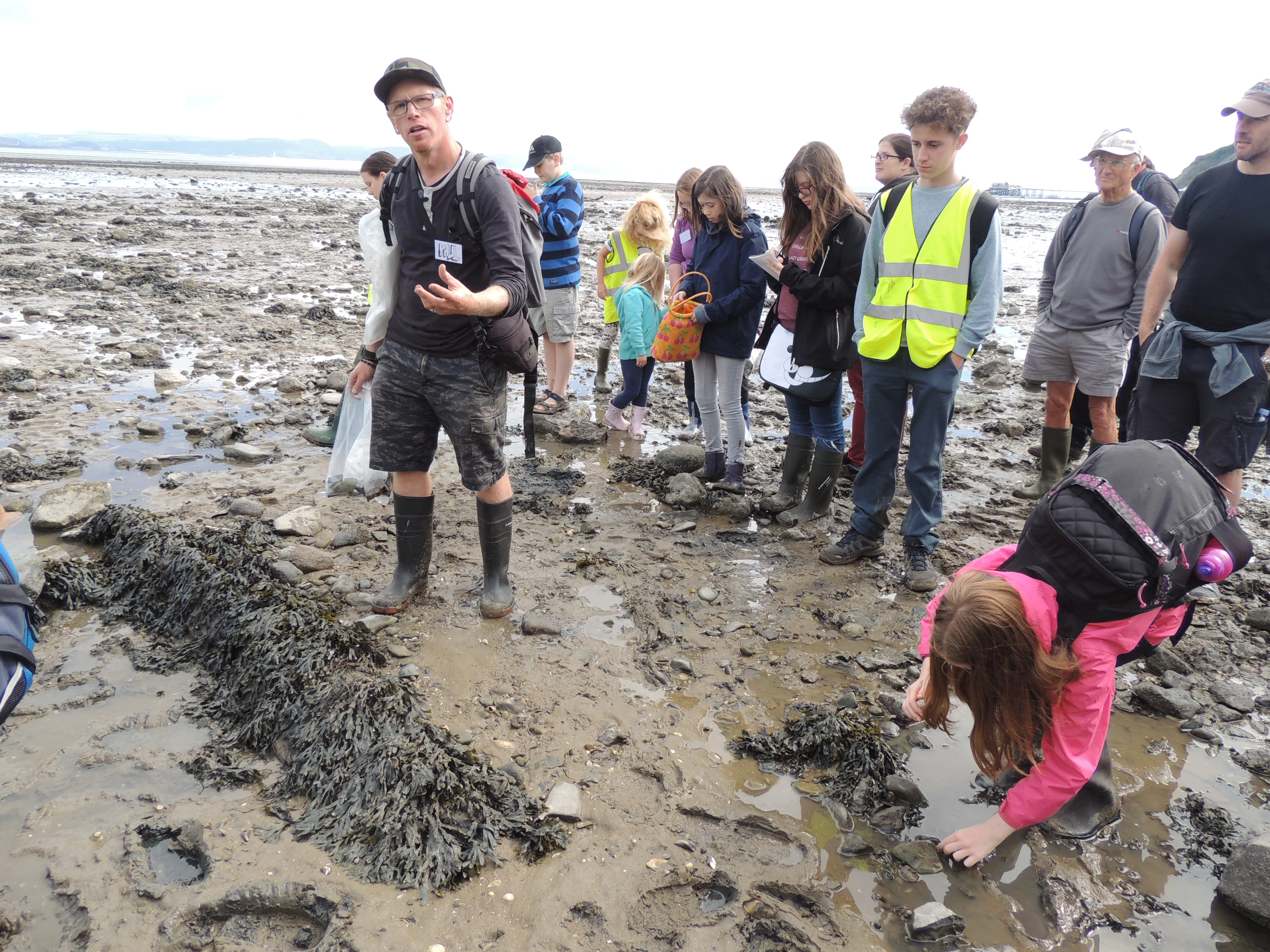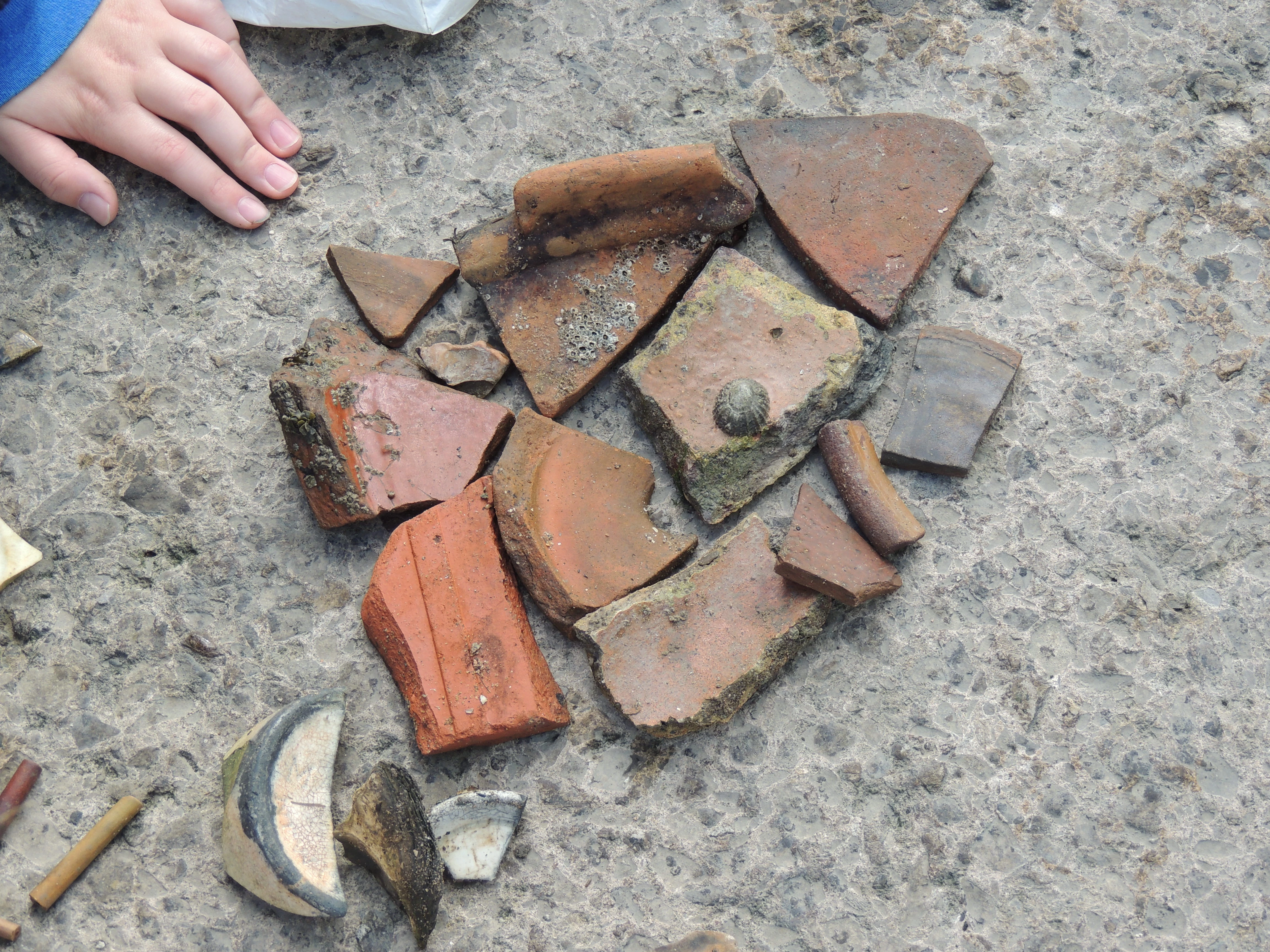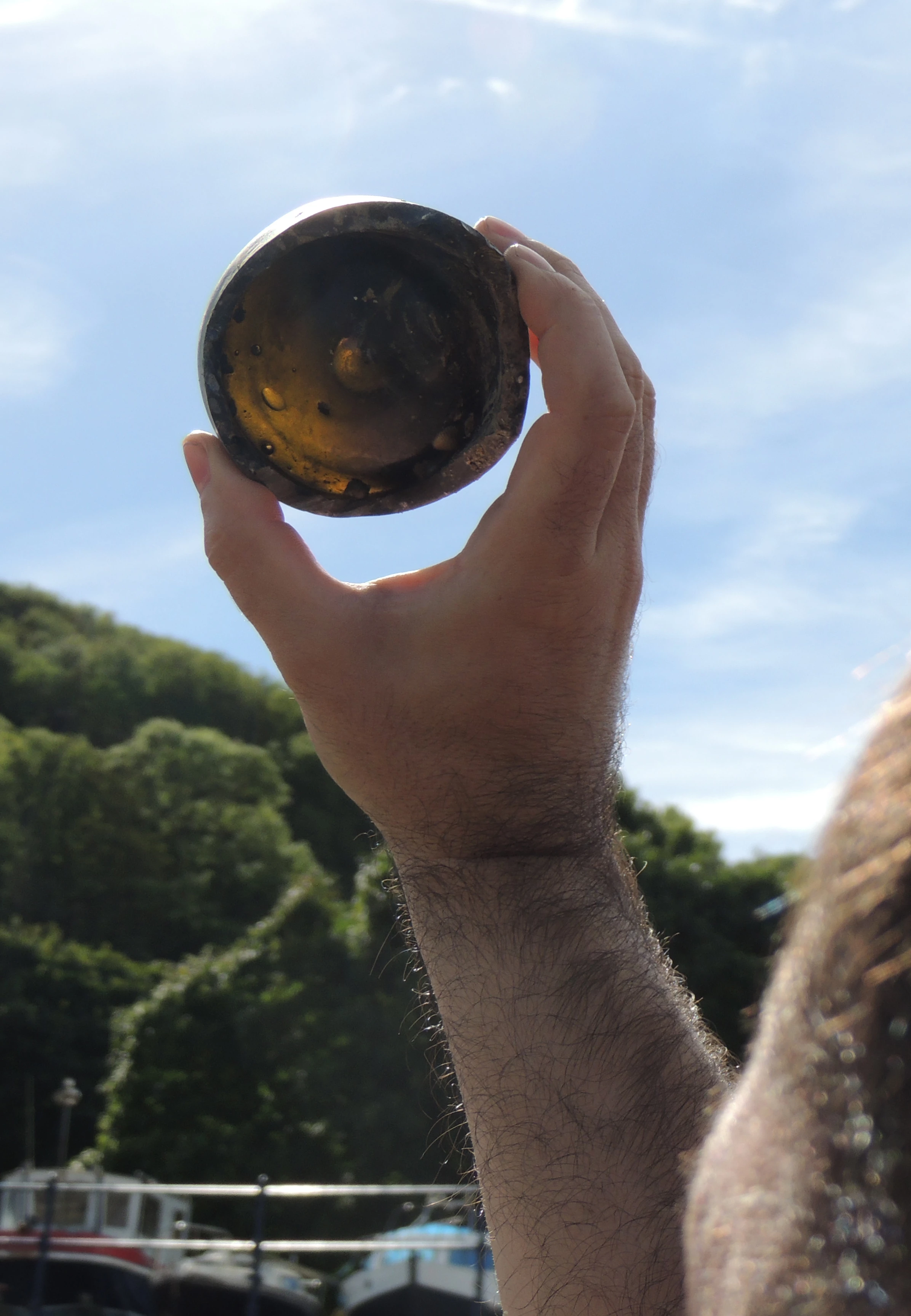The Swansea Bay Big Beachcomb
, 4 November 2016
On a bright and breezy Saturday morning in September an enthusiastic group of children and adults gathered at the Mumbles in wellies and hi-vis jackets ready for a Big Beachcomb.
The Beachcomb was the first activity of Swansea Museum’s Lost Treasures of Swansea Bay project, which is being funded by the Saving Treasures; Telling Stories project based at Amgueddfa Cymru.
Led by Paul Huckfield of the Glamorgan Gwent Archaeological Trust and Mark Lodwick of the Portable Antiquities Scheme Cymru we set out with the retreating tide to see what treasures of Swansea’s past we could find.
Searching
The vast expanse of mud, sand, rocks and shallow pools did not look promising at first. But almost as soon as we had set off Paul was showing us the blackened and glistening remains of a prehistoric forest. Within another hour he had pointed out the sites of seven shipwrecks, old mooring points and other remains of Swansea’s maritime past.
On the surface of the shore we found hundreds of pieces of old pottery, metalwork, animal bones, glassware and pieces of clay pipe. A particularly evocative find was the base of a wine bottle, dating back to the 1600s.
The glass was thick, and so dark that you could only see its muddy green colour by holding it up to the sun. This was a high-status object - once, it would have held a decent vintage rather than plonk.
Collecting
When enough pieces had been collected in carefully labelled bags we laid them out on the slipway and sorted them into categories with the help of Paul and Mark – ceramics, glass and metalware, organic material.
Imagining
We speculated about who the objects had belonged to, when they were made, and how they ended up in Swansea Bay. Some, such as the bottle and some of the pots, were imported items – could they have been among the cargoes of one of the wrecked ships? Had the pipes been smoked by sailors and fishermen with wheezy chests? Were the bones the remains of their dinner?
Our treasures have now been taken back to Swansea Museum where they will be studied by the Young Archaeologists Club and used as inspiration for the Dylan Thomas Centre’s Young Writers Squad.
Look out for the next chapter in their history in a future blog.
